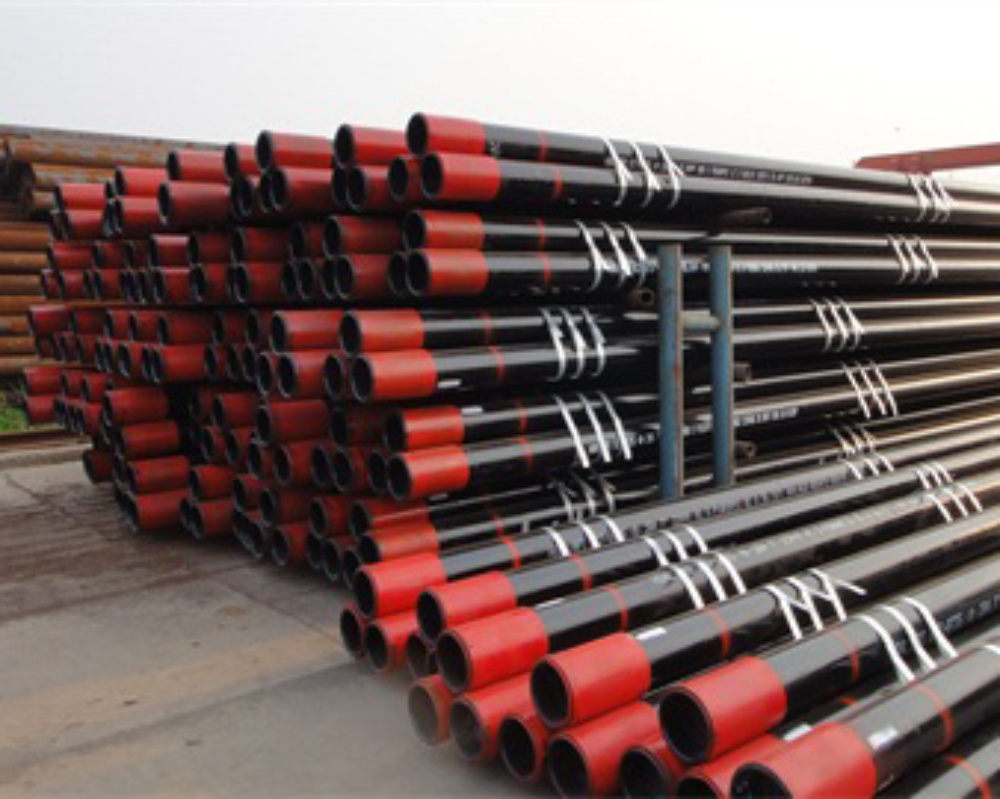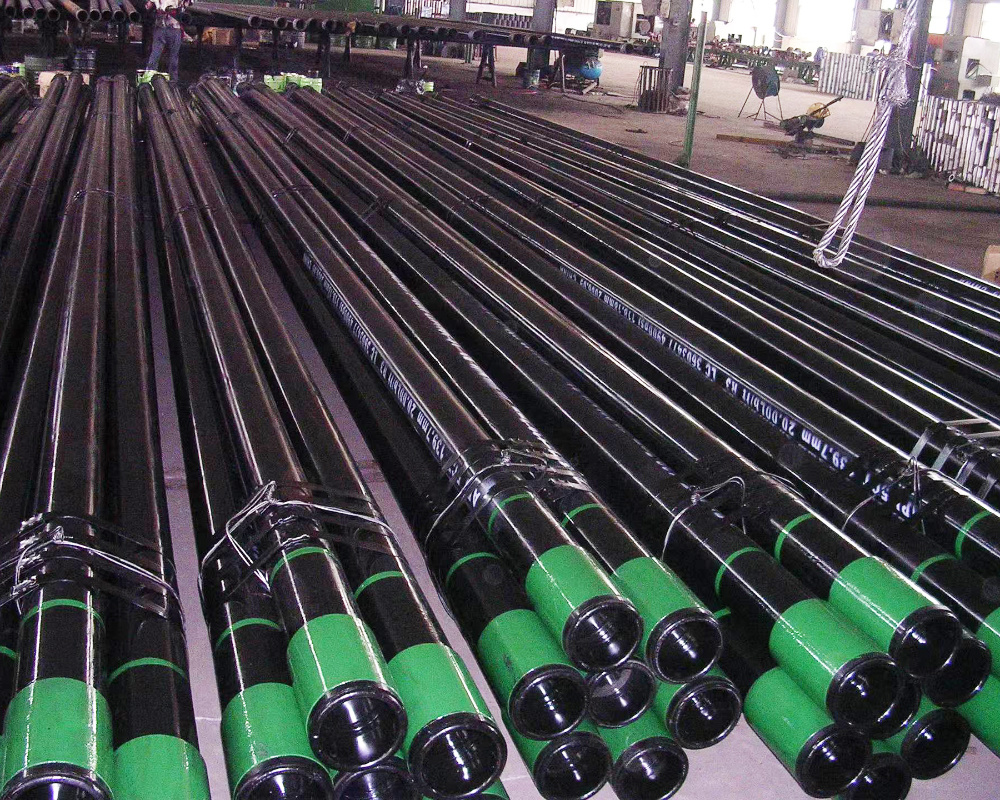Exploring the Benefits of Seamless Steel Pipes in Modern Construction
Exploring the Benefits of Seamless Steel Pipes in Modern Construction
Table of Contents
1. Introduction to Seamless Steel Pipes
2. Key Advantages of Seamless Steel Pipes
2.1 Enhanced Strength and Durability
2.2 Corrosion Resistance
2.3 Versatility in Applications
3. Comparison: Seamless vs. Welded Steel Pipes
4. Common Applications of Seamless Steel Pipes in Construction
4.1 Stru
Exploring the Benefits of Seamless Steel Pipes in Modern Construction
Table of Contents
1. Introduction to Seamless Steel Pipes
2. Key Advantages of Seamless Steel Pipes
2.1 Enhanced Strength and Durability
2.2 Corrosion Resistance
2.3 Versatility in Applications
3. Comparison: Seamless vs. Welded Steel Pipes
4. Common Applications of Seamless Steel Pipes in Construction
4.1 Structural Components
4.2 Fluid Transportation
4.3 HVAC Systems
5. Manufacturing Process of Seamless Steel Pipes
6. Environmental Benefits of Using Seamless Steel Pipes
7. FAQs about Seamless Steel Pipes
8. Conclusion
1. Introduction to Seamless Steel Pipes
Seamless steel pipes are an essential element in the construction and architectural sectors, renowned for their unbroken structure, which enhances their performance in various applications. Unlike welded steel pipes, seamless pipes are manufactured through a hot or cold extrusion process that eliminates seams, resulting in higher strength and reliability. This article explores the myriad benefits of seamless steel pipes in modern construction, highlighting their role in enhancing structural integrity and efficiency.
2. Key Advantages of Seamless Steel Pipes
2.1 Enhanced Strength and Durability
One of the primary advantages of seamless steel pipes is their exceptional strength and durability. The absence of seams ensures that these pipes can withstand high levels of stress and pressure, making them ideal for high-load applications in construction. The uniform structure of seamless pipes offers improved performance in extreme conditions, which is critical for building structures that require stability and safety.
2.2 Corrosion Resistance
Seamless steel pipes are often treated with anti-corrosion coatings or made from corrosion-resistant alloys. This feature is particularly beneficial in construction environments where moisture and chemicals can lead to material degradation. The long-lasting nature of seamless pipes reduces maintenance costs and prolongs the lifespan of installations, making them a cost-effective choice for builders.
2.3 Versatility in Applications
Seamless steel pipes are incredibly versatile and can be used in various construction applications. From structural components to plumbing and HVAC systems, these pipes adapt to numerous functions. Their ability to be fabricated into different shapes and sizes makes them suitable for a wide range of projects, enhancing their appeal among contractors and builders alike.
3. Comparison: Seamless vs. Welded Steel Pipes
When considering piping options for construction, a common comparison arises between seamless and welded steel pipes. Seamless pipes, as mentioned, do not have joints or seams, which enhances their strength. In contrast, welded pipes can experience weaknesses at the weld joints, making them less reliable in high-stress environments. Additionally, seamless pipes require less maintenance over time, as they are less prone to leaks and structural failures.
4. Common Applications of Seamless Steel Pipes in Construction
4.1 Structural Components
Seamless steel pipes serve as vital structural elements in buildings, bridges, and infrastructures. Their strength allows them to support heavy loads, making them indispensable in large construction projects. Whether used as beams or columns, seamless pipes provide the necessary support and stability required for safe structures.
4.2 Fluid Transportation
In modern construction, seamless steel pipes are frequently employed for transporting fluids, such as water, oil, and gas. Their smooth interior surfaces promote efficient flow and minimize turbulence, which is crucial for maintaining pressure in piping systems. Additionally, seamless pipes’ resistance to corrosion ensures that they remain reliable for transporting various substances without compromising integrity.
4.3 HVAC Systems
Seamless steel pipes are often used in heating, ventilation, and air conditioning (HVAC) systems due to their ability to handle high pressures and temperatures. The reliability of these pipes ensures efficient airflow and thermal regulation in residential and commercial buildings, promoting energy efficiency and comfort.
5. Manufacturing Process of Seamless Steel Pipes
The manufacturing process of seamless steel pipes involves several stages, including billet creation, heating, and extrusion. Initially, steel billets are produced, which are then heated until they become malleable. The heated billets are forced through a die to form the desired pipe shape. This process eliminates the need for welding and creates a uniform wall thickness, enhancing the structural integrity of the final product.
6. Environmental Benefits of Using Seamless Steel Pipes
Seamless steel pipes contribute to environmental sustainability in construction. Their durability reduces the need for frequent replacements, thus minimizing waste. Furthermore, the materials used in seamless pipes can be recycled, which aligns with modern construction practices aimed at reducing ecological footprints. Choosing seamless steel pipes can lead to a more sustainable approach to building and infrastructure development.
7. FAQs about Seamless Steel Pipes
What are the primary uses of seamless steel pipes in construction?
Seamless steel pipes are commonly used for structural components, fluid transportation, and HVAC systems due to their strength and reliability.
How do seamless steel pipes compare to welded pipes in terms of cost?
While seamless steel pipes may have a higher upfront cost, their durability and lower maintenance requirements can lead to cost savings over time.
Are seamless steel pipes suitable for high-temperature applications?
Yes, seamless steel pipes are suitable for high-temperature applications, making them ideal for use in various industrial settings.
How can I ensure the quality of seamless steel pipes?
Quality can be ensured by sourcing from reputable manufacturers that adhere to international standards and certifications for steel pipe production.
What maintenance do seamless steel pipes require?
Seamless steel pipes require minimal maintenance, primarily periodic inspections to check for signs of corrosion or wear, especially in corrosive environments.
8. Conclusion
Seamless steel pipes stand out as a superior choice in modern construction due to their unique benefits, including enhanced strength, corrosion resistance, and versatility. As the construction industry continues to evolve, the demand for reliable and robust materials increases, making seamless steel pipes an integral component in building safe and durable structures. By opting for seamless pipes, builders and contractors can ensure that their projects meet both performance and sustainability standards, solidifying their position in the competitive construction landscape.
TAG:
Related Posts
Understanding Carbon Steel Seamless Pipes: Essential Insights for Construction Professionals
Carbon steel seamless pipes are an integral component in the construction and decorative materials industry, particularly in the realm of building pipes. These pipes are manufactured without seams, which makes them highly durable and reliable for various applications. Understanding their properties, advantages, and applications can greatly enhance decision-making for professionals in the field.
On









